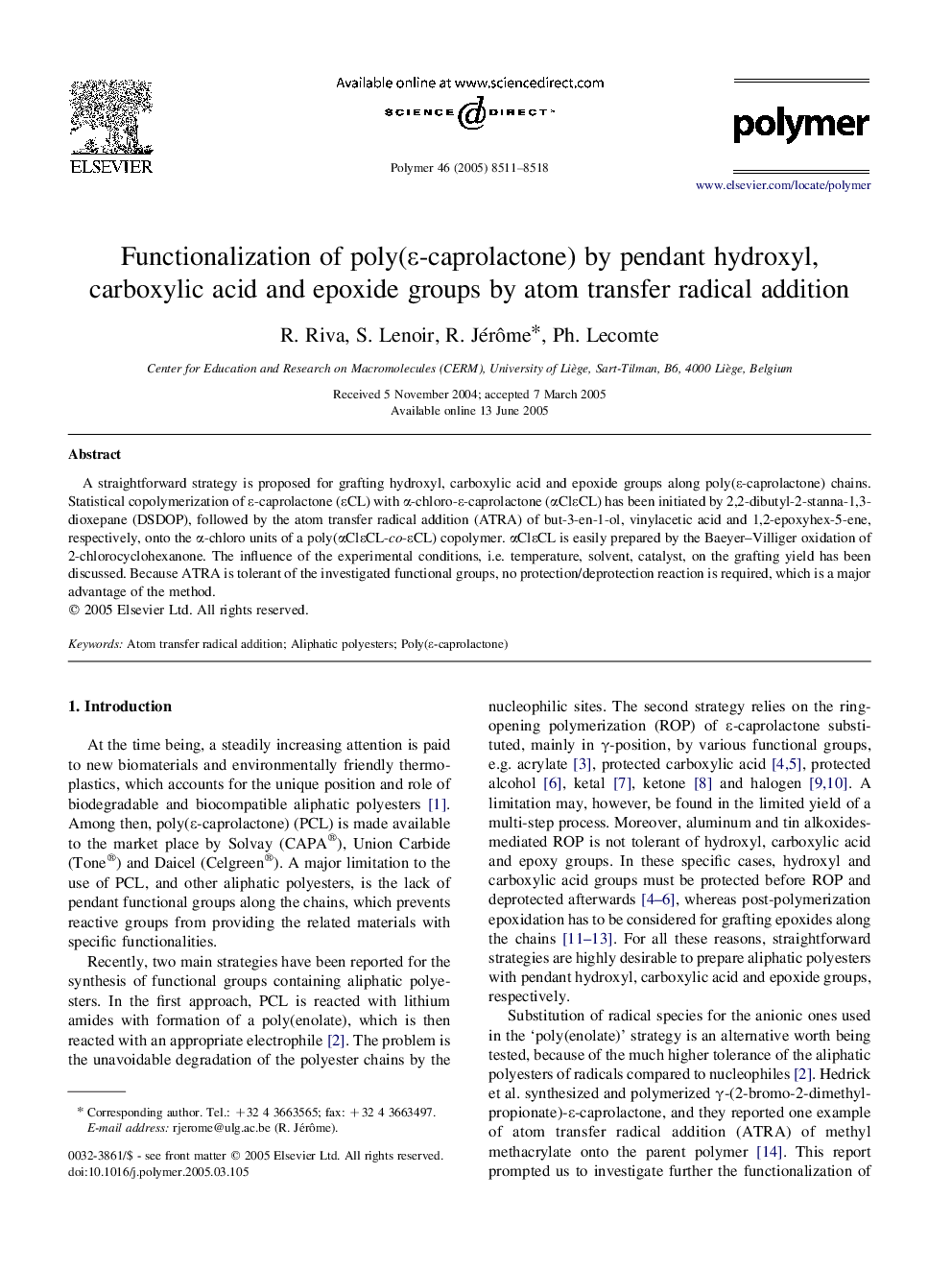| Article ID | Journal | Published Year | Pages | File Type |
|---|---|---|---|---|
| 5190782 | Polymer | 2005 | 8 Pages |
Abstract
A straightforward strategy is proposed for grafting hydroxyl, carboxylic acid and epoxide groups along poly(ε-caprolactone) chains. Statistical copolymerization of ε-caprolactone (εCL) with α-chloro-ε-caprolactone (αClεCL) has been initiated by 2,2-dibutyl-2-stanna-1,3-dioxepane (DSDOP), followed by the atom transfer radical addition (ATRA) of but-3-en-1-ol, vinylacetic acid and 1,2-epoxyhex-5-ene, respectively, onto the α-chloro units of a poly(αClεCL-co-εCL) copolymer. αClεCL is easily prepared by the Baeyer-Villiger oxidation of 2-chlorocyclohexanone. The influence of the experimental conditions, i.e. temperature, solvent, catalyst, on the grafting yield has been discussed. Because ATRA is tolerant of the investigated functional groups, no protection/deprotection reaction is required, which is a major advantage of the method.
Related Topics
Physical Sciences and Engineering
Chemistry
Organic Chemistry
Authors
R. Riva, S. Lenoir, R. Jérôme, Ph. Lecomte,
